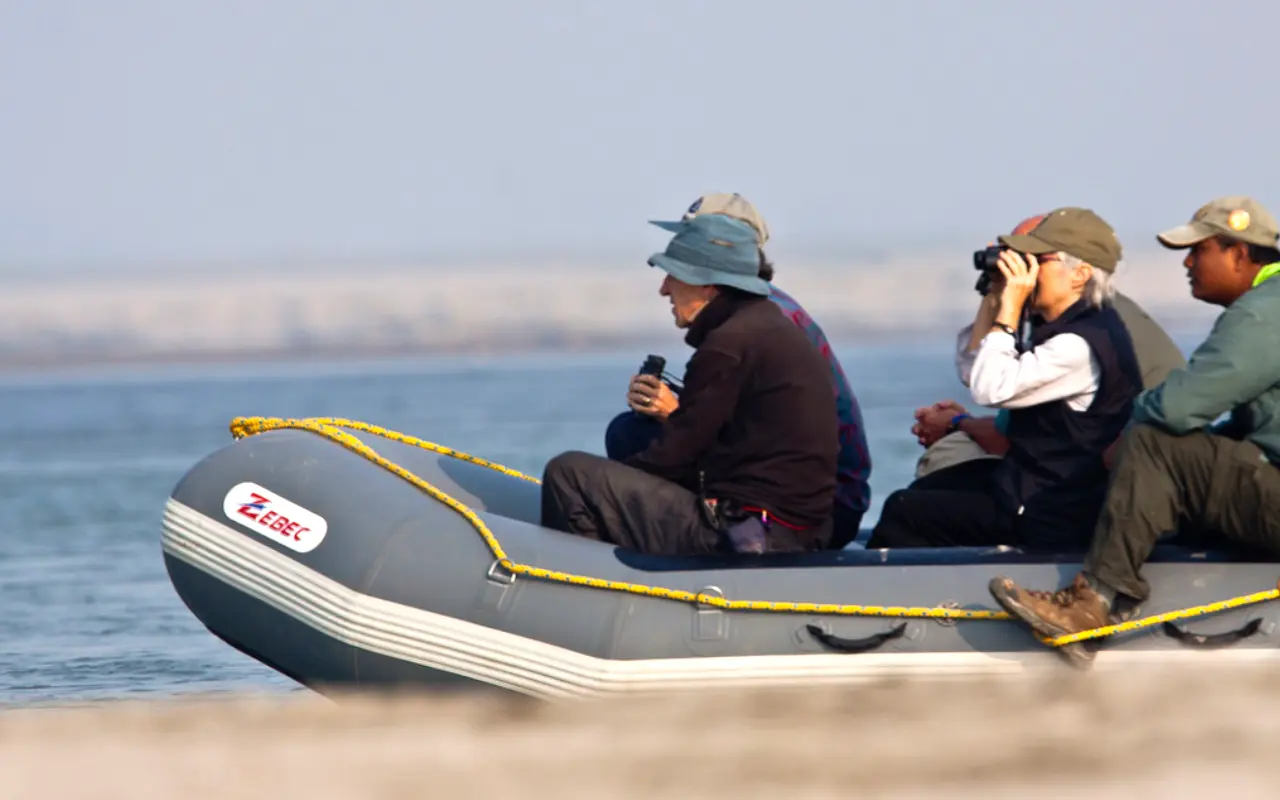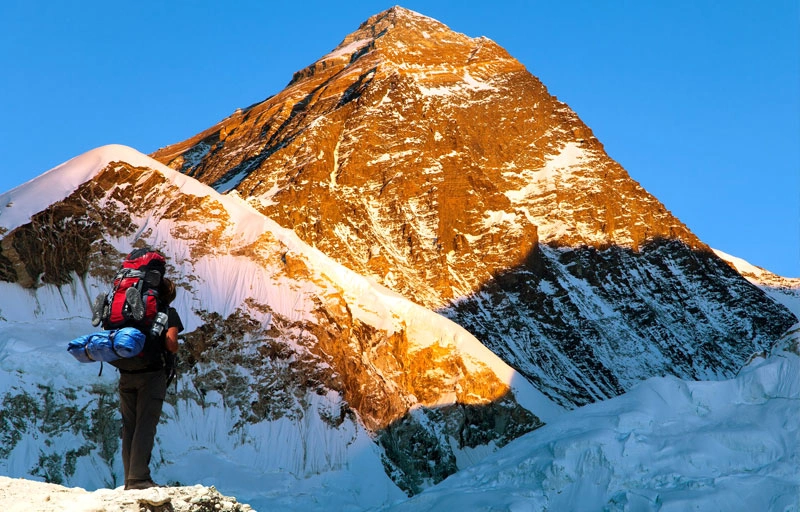Koshi Tappu Wildlife Reserve: A Complete Travel Guide for Nature Lovers

Koshi Tappu Wildlife Reserve is the smallest wildlife reserve of Nepal and was founded in 1976. It covers an area of 176 sq km in the floodplains of the Sapta Koshi River, located in Eastern Nepal. Its wetlands have drawn international notoriety, and in 1987, it was designated as a Ramsar site.
The reserve is heaven on earth to the birders and nature enthusiasts, as it has more than 500 types of birds, with many being threatened both nationally and globally. It also has the last population of wild water buffalo of Nepal, elephants, crocodiles, and the Gangetic dolphin, which are rare.
The reserve lies in the Terai region of the Sunsari, Saptari, and Udayapur districts of Nepal, and encompasses broad reed beds, freshwater marsh, and wet grasslands during the rainy season. It is a habitat of excellent flora and fauna due to its different habitats.
Koshi Tappu Wildlife Reserve is easily accessible from Kathmandu by flights and buses. In Kusaha, you will get good, environmentally friendly lodges and guided tours, which means that the visitor can spend as much time as he or she would like in this natural beauty and wildlife destination in Eastern Nepal.
About Koshi Tappu Wildlife Reserve
The main reason the Koshi Tappu Wildlife Reserve was created in 1976 was to protect the remaining wild water buffalo (Bubalus arnee), also known as the Arna in the local dialect. This conservation area aids in the preservation of the species together with its special wetlands environment in the East of Nepal.
The reserve spans about 176 square kilometers on the floodplains of the Sapta Koshi River, in Sunsari, Saptari, and Udayapur districts. It has a lot of ecological disparity and consists of freshwater marshes, reedy beds, and grasslands that are flooded during summer seasons, carrying rich flora and fauna.
In December 1987, Koshi Tappu was designated as Nepal’s first Ramsar site owing to its value as an international wetland in the conservation of biodiversity. The status enriches the importance of its wetlands and fosters management.
There are great wetlands and unique river islands in the Sapta Koshi River in the reserve. The reserve is an important wildlife sanctuary in Nepal since these islands and wetlands provide focal habitats to many species of birds and aquatic wildlife.
Flora and Fauna
Koshi Tappu Wildlife Reserve hosts a wide array of plant species, including Dalbergia sissoo, Bombyx ceiba, Saccharum spp, Phragmites spp, Typha spp, and Butea monosperma. The flora reserve is vulnerable because some of the plant species, such as Dalbergia latifolia and Rauwolfia serpentina, are endangered.
The reserve has long been a wildlife habitat with the wild water buffalo (Arna) sure to increase in numbers to 441 as it was just 63 in 1976. It also hosts Gangetic dolphin, wild elephant, and a range of deer species like hog deer and spotted deer, contributing to its biodiversity value.
Koshi Tappu Wildlife Reserve is a recognized birdwatching site with over 500 bird species being recorded in the reserve. It is an important habitat for a range of endemic birds such as the rufous-vented prinia, water cock, and also for nationally and internationally threatened birds. Therefore, this area contributes great importance to avian biodiversity.
Wetlands in the reserve are host to complex ecosystems such as submerged, floating, aquatic plants, reed beds, and flooded grasslands. Koshi Tappu wildlife reserve is an important ecological belt in eastern Nepal because it hosts 514 plant species and 527 bird species supported by such a diverse habitat.
Best Time to Visit
October to March in Koshi Tapuu Wildlife Reserve is cool and dry, offering a great opportunity to witness wildlife and enjoy travel. During the period, you will get amazing mountain views with great visibility.
Winter is the peak season for migratory birds, with many bird species visiting from surrounding countries. Bird watchers will recognize many different resident bird species in their winter plumage, along with many migratory birds, therefore offering a great opportunity for photographing birds.
Spring (February to May) is another great experience with reasonable temperatures and active wildlife. After the monsoons, the vegetation is usually lush and green, and supports many bird species and other animals. March and April have been favorites for nature photography and viewing wildlife.
The monsoon season (June to early September) is generally not highly recommended due to the heavy rain, flooding, and difficult terrain to travel in. Wildlife is more difficult to see, and most trails can be wet and tough to travel. The benefits of the wet season prevail by replacing the vegetation and creating a lush and colorful reserve in all other months.
Therefore, to have the optimum experience at Koshi Tappu Wildlife Reserve as far as seeing wild animals and taking photos is concerned, visit this wildlife reserve during October and May, and from October to March, during which migratory birds are spotted and weather conditions are generally good.
Things to Do in Koshi Tappu Wildlife Reserve

Koshi Tappu wildlife reserve is known to give good bird watching tours into marshes and river islands with an opportunity of seeing more than 400 species of birds, with many of them being rare and migratory species. Guided tours aid supporters in discovering and appreciating the assorted bird species.
You can also do exciting jeep safaris along the Koshi River, and the forests surrounding the reserve are also offered. The safaris enable tourists to tour around in the well-established sceneries to get a glimpse of wild water buffalo, deer, crocodiles, and other animals, in their natural environment.
You can also take a boat ride and go wildlife rafting through the Koshi River. You can witness water animals such as Gangetic dolphins and waterfowl, river islands, and the wetlands during the boat ride.
You will have a walk in nature with guided tours within Koshi Tappu Wildlife Reserve, which involves a visit to the Tharu villages representing the local culture. The reserve has a variety of photo shoots to offer, and the wild animals, the bird life, the scenery, and the rivers are of great beauty to every lover of nature, and also to the photographer.
How to Get There
In order to make a visit to Koshi Tappu Wildlife Reserve, you could fly to Biratnagar, a 40-45 minute journey from Kathmandu. The reserve is just a 1.5-hour drive or a bus ride downhill in the scenic drive off Biratnagar Airport. The flight is also the most convenient and fastest means of traveling, particularly to minimize travel time.
Alternatively, a bus can be used, but it takes around 15 hours from Kathmandu. There are buses and minivans available in Koteshwor and the New Bus Park in Kathmandu. If you get to Biratnagar, you can take local buses, private vehicles, and even some tour operators run from time to time to Koshi Tappu Wildlife Reserve.
Buses will frequently leave for the reserve, but will be slower. Private vehicles or taxis will be more comfortable and allow you to switch plans more easily on transfers. Some tour packages will include all land transfers, lodging, and a guide to make it more convenient.
Accommodation and Food
The Koshi Tappu Wildlife Reserve has comfortable accommodation in eco-friendly lodgings such as Koshi Tappu Wildlife Camp, a facility developed in the year 1993. It has 12 luxurious safari tents equipped with twin beds, contemporary toilets, and hot showers/cold showers, which offer a serene outing in the middle of nature to nature enthusiasts.
Around, there are also different homestays and low-cost hotels where people can stay to travel close to the reserve to have a true local experience. Such accommodations as Aqua Birds Eco Resort and Soaltee Westend Itahari offer convenient places with decent amenities, only a couple of miles away from the reserve.
The other facilities with the Koshi Tappu Wildlife Camp include a central restaurant that offers both Nepali and international cuisines in addition to a fully stocked bar. The availability of local dishes and Western favorites guarantees different and fresh food to the visitors in the area.
Foods during the trip are Nepali cuisine. You can also have a chance to taste foods from different communities, including rai. In the lodges, you will get both Nepali and Western-style food options.
Permits and Entry Fees
The charges for Koshi Tappu Wildlife Reserve are NPR 100 for Nepali nationals, NPR 750 for SAARC nationals, and NPR 1,500 for foreign tourists. There is an additional vehicle entry fee of NPR 300 per vehicle.
Permits or tickets for the Koshi Tappu Wildlife Reserve can be purchased at the reserve entrance gate or the Koshi Tappu Wildlife Reserve headquarters directly. It is advisable to purchase the permit at the time of arrival for day visitors, and a new ticket will be required for each new day.
Guides are available at the reserve, but they are optional. Hiring a guide is highly advised to enjoy the day and have a more fulfilling experience. Plus, guides can be arranged at the Koshi Tappu Wildlife Reserve too. Some tour package options include permits for the assistant purposes for visitors.
Travel Tips

- Pack items like binoculars, a camera and batteries, sunscreen, sunglasses, comfortable hiking shoes, and insect repellent.
- Use a reusable water bottle when going on safaris and nature walks to keep your hands wet. It is also advised to wear light, airy clothes with a light jacket suitable for changing between the variable weather.
- Do not litter or make a high amount of noise in habitats that are in a quest to preserve the lives of wildlife.
- Exercise responsible tourism that avoids littering and keeps noise to a minimum level to safeguard the wildlife habitats. Respect local culture and traditions, and buy local handicrafts, to support local communities.
- Follow the sustainable tourism principle and do not disturb the wild flora and fauna during the hike.
- Hiring a guide is highly recommended in case of jeep safari and boat riding.
- Check the weather forecast before starting your tour to Koshi Tappu Wildlife Reserve. Bring simple first aid in case of small injuries or insect bites.
- Observe park laws and entrance conditions, such as getting permits, paying the entrance charges at the stated entry to get into the park. Pay attention to briefings and be guided accordingly when staff of the reserves give instructions, and have a safe and enjoyable visit.
Nearby Attractions
A popular spot for sightseeing and birdwatching is Koshi Barrage, which is next to Koshi Tappu Wildlife Reserve. It has magnificent sights of the Koshi River and wetland life, and provides a better nature experience outside the reserve as well.
There is cultural sightseeing and urban sightseeing in the nearby towns of Dharan and Itahari. Dharan boasts of a vibrant market, picturesque hilltop views, and a rich ethnic culture, whereas Itahari is an ideal place of convenience that boasts local veggie stores and food joints.
The tourists even have an opportunity to experience the cultural life in the nearby Tharu villages once they visit Koshi Tappu Wildlife Reserve. The view of the lifestyle of indigenous communities is provided by these communities and their traditional houses, crafts, and eco-friendly activities, and so the visit is not only informative but also interesting.
Sample 2-Day Koshi Tappu Itinerary
Day 1: Arrival at Koshi Tappu Wildlife Reserve:
Arrival at Koshi Tappu Wildlife Reserve means transfer to your lodge or camp from Biratnagar or any other points in this region. Take it easy after arrival with an evening birdwatching tour around the marshlands and river islands in search of resident and migratory birds.
After the birdwatching, you will have a real Nepalese dinner in the camp and enjoy local hospitality. The sunset beauty of wetlands presents a good background during the evening hours to begin with the nature lovers at Koshi Tappu Wildlife Reserve.
Day 2:
An Early morning jeep or boat safari will allow you to experience the variety of habitats at Koshi Tappu Wildlife Reserve. Early mornings will bring sightings of wild water buffalo, Gangetic dolphins, deer, and tons of birds in the cool, fresh morning light.
In the afternoon, you can visit a local Tharu village and do a cultural tour on how locals live and their traditions. You can return to Kathmandu after exploring the site and having a satisfying 2-day experience in Koshi Tappu Wildlife Reserve.
Conclusion
The Koshi Tappu Wildlife Reserve is a destination worth visiting by any nature enthusiast and a must go to place where rare wildlife, colorful bird life, and clean wetlands can be sighted in abundance. Its multifarious habitats offer a serene getaway into the natural heritage of Nepal that is rich in flora and fauna as well as panorama.
The exploration of Koshi Tappu will enable the tourist to get in touch with nature amongst rare species, including wild water buffalo and Gangetic dolphin, alongside an immersive experience into the culture. It also brings to the fore the less-traveled but even more treasured wildlife attractions in Nepal off the beaten travel paths.
Pack your bags to visit the Koshi Tappu Wildlife Reserve today and participate in the conservation. Practice responsible tourism, record great experiences, and make sure you save this ecological pearl to be seen by the generations following us. It is time to explore the wild wonders of Nepal–so, get going!





